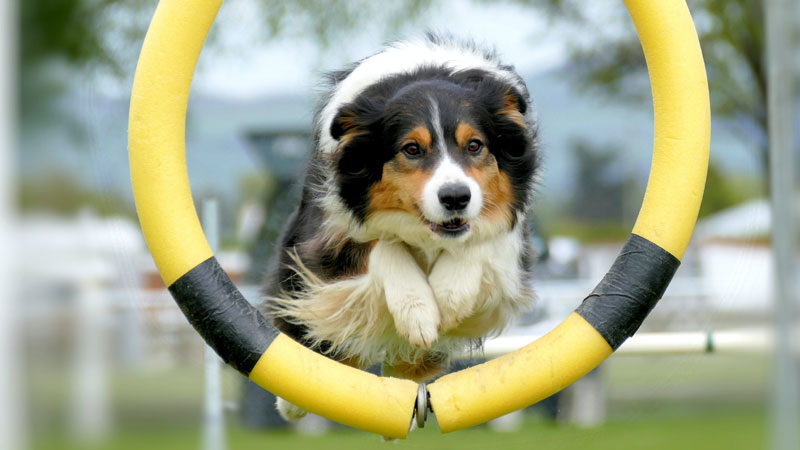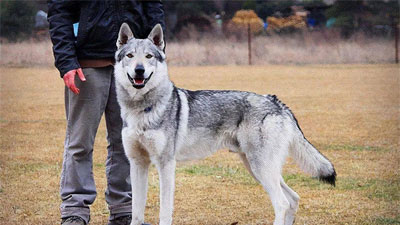- Size
- Smallest
- Small
- Small to Medium
- Medium
- Large
- Giant
- Characteristics
- Smartest
- Hypoallergenic
- Fluffy
- Best Guard
- Best Family
- Best for Kids
- Low Shedding
- Healthiest
- Police Dogs
- Most Calm
- Quietest
- Color
- White
- Black
- Grey
- Brown
- Blue
- Red
- Coat
- Hairless
- Short
- Long
- Origin
- Japan
- China
- Australia
- Germany
- Italy
- United States
- France
- Group
- Hound
- Terrier
- Herding
- Toy
- Working
- Sporting
Age and Breed Considerations in Dog Training

Photo by Andrea Lightfoot on Unsplash
Dogs, often considered our most loyal companions, come in a vast array of breeds, each with its unique characteristics and quirks. Training a dog is an essential and rewarding aspect of pet ownership. It helps to establish a strong bond between the owner and their furry companion while ensuring the safety and well-being of both.
However, it is crucial to consider the age and breed of the dog when designing a training program. Age and breed play a significant role in determining the dog's learning capabilities, temperament, and energy levels. By understanding these considerations, pet owners can tailor their training approaches to effectively meet their dog's needs, ensuring a positive and successful training experience.
Age Considerations
Puppyhood: The Formative Years
Puppies are undeniably adorable, but they also present a unique set of challenges when it comes to training. The formative years of puppyhood are characterized by boundless energy, curiosity, and a short attention span. It's crucial for owners to adapt their training techniques to accommodate these traits.
Puppies benefit from short and frequent training sessions, typically ranging from five to ten minutes. This approach aligns with their limited attention spans, allowing for effective learning without overwhelming them. Focus on basic commands such as sit, stay, and come, gradually introducing more complex tasks as your puppy matures.
Positive reinforcement is particularly effective during puppy training. Praise, treats, and play serve as powerful motivators, encouraging desired behaviors and strengthening the bond between owner and pup.
Adolescence: The Testing Ground
As dogs enter adolescence, usually around six months to two years, they undergo a stage often likened to human adolescence. This phase is marked by increased independence, testing boundaries, and occasional rebellious behavior. Owners may find that their once-cooperative puppies are now more easily distracted or less eager to please.
Consistency becomes paramount during adolescence. Maintaining a steady routine and reinforcing established rules helps curb unwanted behaviors. While the testing phase can be challenging, it's essential to approach training with patience and a steady hand.
Engaging in mentally stimulating activities, such as puzzle toys or interactive games, can provide an outlet for your adolescent dog's energy and curiosity. Additionally, continuing positive reinforcement and varying training exercises can keep them engaged and responsive.
Maturity: Prime Time for Learning
As dogs reach maturity, typically around two years old or older, they often settle into a more stable temperament. Maturity varies among breeds, with smaller breeds generally reaching maturity sooner than larger ones. This period presents an excellent opportunity to refine and expand your dog's training.
Mature dogs benefit from longer training sessions, but it's crucial to keep activities engaging to prevent boredom. Incorporate advanced commands, agility exercises, or specialized training based on your dog's interests and abilities. Positive reinforcement remains effective, and the bond forged during earlier training stages solidifies, contributing to a more cooperative and well-behaved companion.
Breed Considerations
Tailoring Training to Canine Nature
Beyond age, a dog's breed significantly influences their learning style and capabilities. Different breeds have been selectively bred for specific purposes, resulting in diverse temperaments, energy levels, and predispositions. Understanding your dog's breed characteristics is key to developing a tailored training approach.
1. Herding Breeds:
Breeds like Border Collies and Australian Shepherds are known for their intelligence and herding instincts. Mental stimulation is crucial; engage these dogs in activities that challenge their problem-solving abilities. Agility training and tasks that mimic herding behaviors can be particularly rewarding.
2. Working Breeds:
Breeds like Labrador Retrievers and German Shepherds are often used as working dogs due to their versatility. Incorporate tasks that tap into their natural skills, such as retrieving or guarding exercises. Varied and challenging activities keep these dogs mentally sharp and physically satisfied.
3. Toy Breeds:
Small breeds like Chihuahuas and Pomeranians may have shorter attention spans and delicate physiques. Short, fun training sessions with gentle positive reinforcement work well. Due to their size, physical activities should be adapted to their capabilities.
4. Hound Breeds:
Hounds, such as Beagles and Greyhounds, often have strong prey drives and a keen sense of smell. Incorporate scent-based games or activities that tap into their natural instincts. Provide mental challenges to satisfy their curious nature.
5. Terrier Breeds:
Terriers, known for their tenacity, may require consistent and firm training. Engage them in activities that channel their energy constructively, such as digging in designated areas or participating in agility trials. Socialization is crucial to manage potential territorial behaviors.
Tailoring Training to Individual Dogs
While general breed characteristics provide a foundation for understanding your dog's tendencies, it's essential to recognize the individuality of each canine companion. Even within a specific breed, there can be significant variations in personality, energy levels, and learning styles.
Observing your dog's preferences, strengths, and weaknesses allows you to tailor training to their unique needs. Some dogs may excel in agility courses, while others may prefer scent-based tasks or obedience training. A holistic approach, considering both age and breed factors, ensures a comprehensive and effective training regimen.
Conclusion
In the intricate tapestry of canine learning, age and breed considerations weave essential threads that shape a dog's ability to absorb and apply knowledge. Recognizing the developmental stages of puppyhood, adolescence, and maturity enables owners to tailor training methods to suit their dog's evolving needs. Understanding breed characteristics provides valuable insights into a dog's innate tendencies, allowing for a customized approach that respects their natural instincts and abilities.
Ultimately, successful training is a collaborative effort, requiring patience, consistency, and a deep understanding of the individual dog. By embracing the nuances of age and breed, owners can unlock the full potential of their canine companions, fostering not only obedience but also a lifelong bond built on trust, communication, and shared experiences.
You May Also Like
 Dog Training TipsHow To Train Your Dog To Eye Contact
Dog Training TipsHow To Train Your Dog To Eye Contact Help & AdviceWhy Won't My Dog Learn To "Stand" Command?
Help & AdviceWhy Won't My Dog Learn To "Stand" Command? Dog Training TipsThe 'Stand' Command: A Crucial Yet Overlooked Training Cue
Dog Training TipsThe 'Stand' Command: A Crucial Yet Overlooked Training Cue Dog Training TipsThe Place Command: Teach Your Dog to Go to Their Place
Dog Training TipsThe Place Command: Teach Your Dog to Go to Their Place Dog Training TipsDog Tricks: Teach Your Dog to High Five
Dog Training TipsDog Tricks: Teach Your Dog to High Five Dog Training TipsTrain Your Dog to Play Dead: A Step-by-Step Guide
Dog Training TipsTrain Your Dog to Play Dead: A Step-by-Step Guide